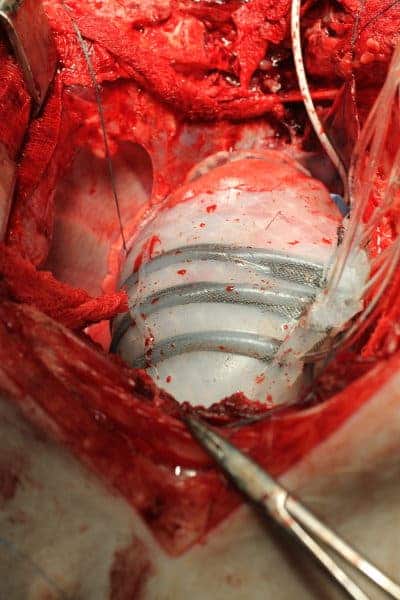A soft, customizable robot fits around a human heart and helps it beat. Without actually touching any blood, it augments cardiovascular functions, reducing the risk of clots and eliminating the need for dangerous blood thinning medication. All this sounds like Science Fiction — but it’s very much real. The technology was developed by researchers from Harvard University and Boston Children’s Hospital as a treatment for people suffering from heart failure.

Credit: Courtesy of Ellen Roche/Harvard SEAS
Heart failure affects over 40 million people every year. Today, we have some possibilities to mechanically aid the heart through pumps called ventricular assist devices (VADs) which pump blood from the ventricles into the aorta, and heart transplant. While this is spectacular in itself, patients using VADs are still at risk of blood clots and stroke, so scientists wanted a different option, a robot which isn’t in contact with any blood.
“This work represents an exciting proof of concept result for this soft robot, demonstrating that it can safely interact with soft tissue and lead to improvements in cardiac function. We envision many other future applications where such devices can delivery mechanotherapy both inside and outside of the body,” said Conor Walsh, senior author of the paper and the John L. Loeb Associate Professor of Engineering and Applied Sciences at SEAS and Core Faculty Member at the Wyss Institute.
To create the device, they took inspiration from the heart itself. It features soft pneumatic actuators placed around the heart, mimicking the outer muscle layers of the mammalian heart. They’re covered with a thin silicone sleeve, and the actuators pull and compress the sleeve in a similar fashion to a real heart. Everything is connected to an external pump which uses air to power the actuators. In other words, it stimulates the heart just like the real muscles do, but from the outside – not from within.
Researchers have really big plans for this technology, and soft robots seem like a great fit for this type of invasive yet delicate interventions.
“This work represents an exciting proof of concept result for this soft robot, demonstrating that it can safely interact with soft tissue and lead to improvements in cardiac function. We envision many other future applications where such devices can delivery mechanotherapy both inside and outside of the body,” said Conor Walsh, senior author of the paper and the John L. Loeb Associate Professor of Engineering and Applied Sciences at SEAS and Core Faculty Member at the Wyss Institute.
So far, the work has only been tested in a lab and on animal models — there’s still a way to go before it will be tested on humans. But the research opens intriguing possibilities: can we truly augment human organs with soft, external robots? The answer will likely be ‘yes.’



